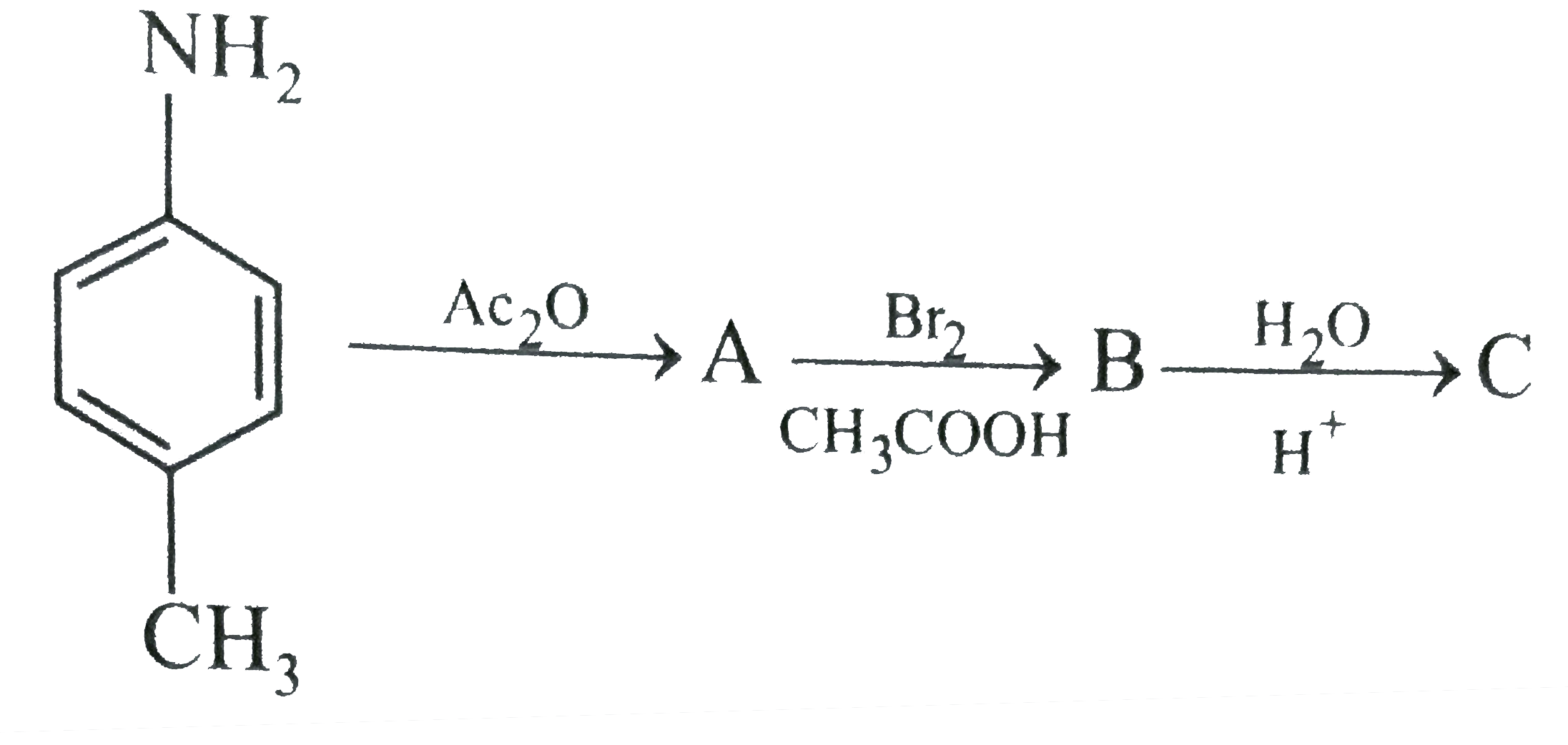Propene is allowed to react with B2D6 and the product is treated with acetic acid. The final product obtained is -
(a)1−deuteriopropane
(b)2−deuteriopropane
(c)1−deuteriopropene
(d)2−deuteriopropene
The correct Answer is:B
To solve the question, we need to analyze the reaction of propene with B2D6 and then with acetic acid. Here’s a step-by-step breakdown of the process:
Step 1: Identify the Reactants
The reactant is propene, which has the molecular formula C3H6. It can be represented as:
CH3CH=CH2
Step 2: Understand the Reaction with B2D6
B2D6 (Diborane) is used in hydroboration reactions. In this case, it will add across the double bond of propene. The reaction proceeds as follows:
- The boron atom from B2D6 will add to the less substituted carbon atom (the terminal carbon), while the deuterium (D) will add to the more substituted carbon atom.
Step 3: Write the Reaction
When propene reacts with B2D6, the addition occurs as follows:
CH3CH=CH2+B2D6→CH3CH(D)CH2B
This results in the formation of an organoborane intermediate:
CH3CH(D)CH2B
Step 4: Treatment with Acetic Acid
Next, the organoborane intermediate is treated with acetic acid (CH3COOH). This step involves hydrolysis, where the boron atom is replaced by a hydrogen atom:
CH3CH(D)CH2B+CH3COOH→CH3CH(D)CH3+B(OH)3
The deuterium (D) remains on the more substituted carbon.
Step 5: Final Product
The final product after the reaction with acetic acid is:
CH3CH(D)CH3
This compound is known as 2-deuteropropane.
Step 6: IUPAC Naming
The IUPAC name of the final product is 2-deuteropropane.
Final Answer
The final product obtained is 2-deuteropropane.
---
The reactant is propene, which has the molecular formula C3H6. It can be represented as:
CH3CH=CH2
B2D6 (Diborane) is used in hydroboration reactions. In this case, it will add across the double bond of propene. The reaction proceeds as follows:
- The boron atom from B2D6 will add to the less substituted carbon atom (the terminal carbon), while the deuterium (D) will add to the more substituted carbon atom.
When propene reacts with B2D6, the addition occurs as follows:
CH3CH=CH2+B2D6→CH3CH(D)CH2B
This results in the formation of an organoborane intermediate:
CH3CH(D)CH2B
Next, the organoborane intermediate is treated with acetic acid (CH3COOH). This step involves hydrolysis, where the boron atom is replaced by a hydrogen atom:
CH3CH(D)CH2B+CH3COOH→CH3CH(D)CH3+B(OH)3
The deuterium (D) remains on the more substituted carbon.
The final product after the reaction with acetic acid is:
CH3CH(D)CH3
This compound is known as 2-deuteropropane.
The IUPAC name of the final product is 2-deuteropropane.
The final product obtained is 2-deuteropropane.
Topper's Solved these Questions
- ALKENE, ALKANE & ALKYNE BOOK - ALLENCHAPTER - ALKENE, ALKANE & ALKYNE EXERCISE - EXERCISE-2
103 Videos
- ALKENE, ALKANE & ALKYNE BOOK - ALLENCHAPTER - ALKENE, ALKANE & ALKYNE EXERCISE - EXERCISE-3
99 Videos
- ALKENE, ALKANE & ALKYNE BOOK - ALLENCHAPTER - ALKENE, ALKANE & ALKYNE EXERCISE - EXCERSISE-3
28 Videos
- AIIMS 2019BOOK - ALLENCHAPTER - AIIMS 2019EXERCISE - CHEMISTRY
40 Videos
- ALKYL AND ARYL HALIDEBOOK - ALLENCHAPTER - ALKYL AND ARYL HALIDEEXERCISE - EXERCISE-05 (B)
35 Videos
Similar Questions
1−Methylcyclohexene is allowed to react with B2H6. The
product is then treated with H2O2 and NaOH. The reaction is -
_E01_007_Q01.png)
The product formed is
View SolutionWhen sodium is treated with sufficient oxygen/air, the product obtained is
View SolutionThe final product obtained in the reaction

View SolutionThe final product obtained in the reaction

View SolutionWhen methyl iodide is treated with ammonia, the product obtained is/are:
View Solution4-Oxobutanoic acid is reduced with Na-borohydride and the product is treated with aqueous acid. The final product is :
View SolutionPara toluidine is treated with HNO2 at ice cold condtions and then boiled with water. The final product obtained is:
View Solutiono-Chloroaniline is treated with a mixture of NaNO2 and HCl and the product is reacted with cuprous bromide. The final product in the reaction will be
View Solution
The final product C, obtained in this reaction
View SolutionThe final product C, obtained in this reaction

View Solution
